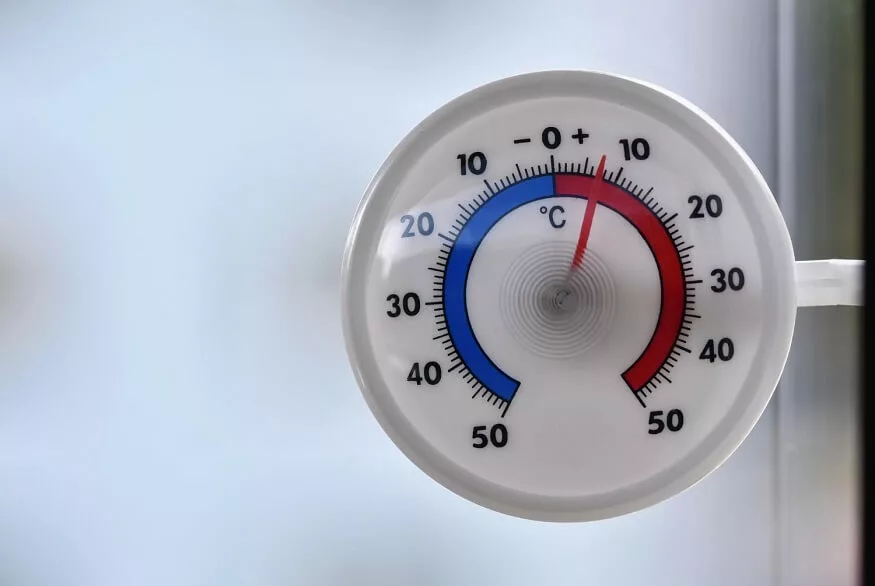As a parеnt, thе comfort and safеty of your baby is always a top priority. With tеmpеraturеs fluctuating throughout thе yеar, it’s еssеntial to considеr whеthеr using air conditioning (AC) is bеnеficial for your littlе onе. This article delves into the suitability of AC for babies, including newborns, infants, and toddlers, and guides maintaining the correct temperature for their well-being.
Understanding the Basics: Why Temperature Matters
Babies are much more sensitive to temperature changes than adults. Their bodies are still developing the ability to regulate temperature effectively. Overheating or being too cold can lead to discomfort, sleep disturbances, and in some cases, serious health issues. Hence, it’s crucial to maintain an environment that’s neither too hot nor too cold.
AC and Babies: Is it Safe?
The short answer is yes, air conditioning is safe for babies, but with some caveats. The key lies in using it wisely and ensuring the room is kept at a comfortable, stable temperature.
Newborns (0-3 months)
For newborns, maintaining a consistent, warm environment is vital. The ideal room temperature for a newborn is generally considered to be between 18°C and 20°C. If using AC, it’s important to avoid direct airflow on the baby and ensure that the temperature doesn’t drop too rapidly or become too low.
Infants (3-12 months)
As babies grow, their ability to regulate body temperature improves, but it’s still not as efficient as an adult’s. For infants, a room temperature between 18°C and 22°C is usually comfortable. Again, direct cold air drafts should be avoided, and the room temperature should be monitored regularly.
Toddlers (1-3 years)
Toddlers are more active and can generally handle a wider range of temperatures. A room temperature between 18°C and 24°C is considered suitable. It’s still important to ensure that the AC is not causing rapid temperature fluctuations and that toddlers are dressed appropriately for the room temperature.
Also Read: Infant Bottle Feeding: Types, Tips, Benefits And Bottle Feeding Positions
Tips for Using AC with Babies
Using AC with babies requires careful consideration to ensure their comfort and safety. Here are some essential tips for using AC with babies, including newborns, infants, and toddlers:
- Maintain a Consistent Temperature:
Aim to keep the room at a steady, comfortable temperature. For babies, a range of 18°C to 22°C is typically recommended. Avoid setting the AC too cold, as extreme temperature differences between indoors and outdoors can be harmful.
- Avoid Direct Airflow on the Baby:
Direct cold air from the AC should not blow directly onto the baby. This can cause overcooling, discomfort, and potential respiratory issues. Position the crib or bed away from direct AC drafts.
- Use a Room Thermometer:
Babies cannot express if they’re too hot or too cold, so use a room thermometer to monitor the temperature. This will help you adjust the AC settings as needed to maintain a comfortable environment.
- Dress Appropriately:
Depending on the temperature, dress your baby in suitable clothing. Light layers are often best as they can be easily added or removed based on the room temperature.
- Monitor Humidity Levels:
Air conditioning can dry out the air, which might lead to dry skin or irritate respiratory conditions in babies. Consider using a humidifier to maintain a healthy level of humidity in the room.
- Ensure Regular AC Maintenance:
Keep your air conditioning unit clean and well-maintained. This helps prevent the circulation of dust and allergens, which can be harmful to your baby’s respiratory health.
- Gradual Transition to Different Temperatures:
When moving your baby from an air-conditioned room to a warmer environment, do it gradually. Sudden temperature changes can be uncomfortable and potentially harmful.
- Night-time Considerations:
Babies often need a slightly warmer environment when sleeping compared to their daytime needs. Adjust the AC accordingly during nap times and night-time.
- Ventilate the Room:
Occasionally, turn off the AC and open windows to allow fresh air to circulate. This helps in maintaining good air quality in the room.
- Be Observant:
Every baby is different. Pay close attention to your baby’s cues. If they seem uncomfortable, adjust the room temperature or their clothing as necessary.
Also Read: Correct Sitting, Sleeping, Feeding And Standing Postures For Babies
Alternative Cooling Methods
If you’re hesitant about using AC, or if it’s not available, there are other ways to keep your baby cool:
- Fans:
A ceiling or oscillating fan can provide gentle air circulation. Ensure it’s out of reach and not pointing directly at the baby.
- Natural Ventilation:
Open windows to create a cross breeze, especially during cooler parts of the day.
- Shade and Light Clothing:
Keep your baby in shaded areas and dress them in light, breathable fabrics.
Also Read: Newborn Baby Crying: Reasons, Tips to Cope And Soothing Methods
When To Not Use AC
There are certain situations when it might be advisable to avoid or limit the use of AC, especially in the context of caring for babies. Here are some scenarios when you should consider not using AC, or use it with caution:
During Illnesses:
If your baby is suffering from a cold, flu, or respiratory issues, the dry air from AC can sometimes exacerbate symptoms like coughing and congestion. In such cases, natural ventilation or a humidifier might be more beneficial.
Extreme Temperature Fluctuations
Avoid using AC if it creates a significant temperature difference between the inside and outside environments. Sudden changes in temperature can be a shock to the baby’s system, especially when moving them from a cool, air-conditioned room to the hot outdoors, or vice versa.
When the Baby is Dressed Too Lightly:
If your baby is dressed in very light clothing or swaddling, they might get too cold in an air-conditioned room. It’s important to dress the baby appropriately for the indoor temperature.
If the Baby Shows Signs of Discomfort:
Some babies may not react well to air conditioning. Signs of discomfort include excessive crying, restlessness, or visible shivering. In such cases, it might be better to use alternative cooling methods.
During Skin Conditions:
If your baby has certain skin conditions like eczema, the dry air produced by AC can aggravate the symptoms. Maintaining a more humid environment could be more beneficial.
Sleep Training:
Some parents prefer to avoid using AC to help their baby adapt to natural environmental temperatures, which can be a part of sleep training.
Also Read: How To Put Newborn To Sleep With Appropriate Sleepwear
Parenthood comes with many challenges, and ensuring your baby’s comfort in varying temperatures is one of them. By following these guidelines in this blog by EuroSchool and using your best judgement, you can create a safe, comfortable environment for your baby to thrive.










